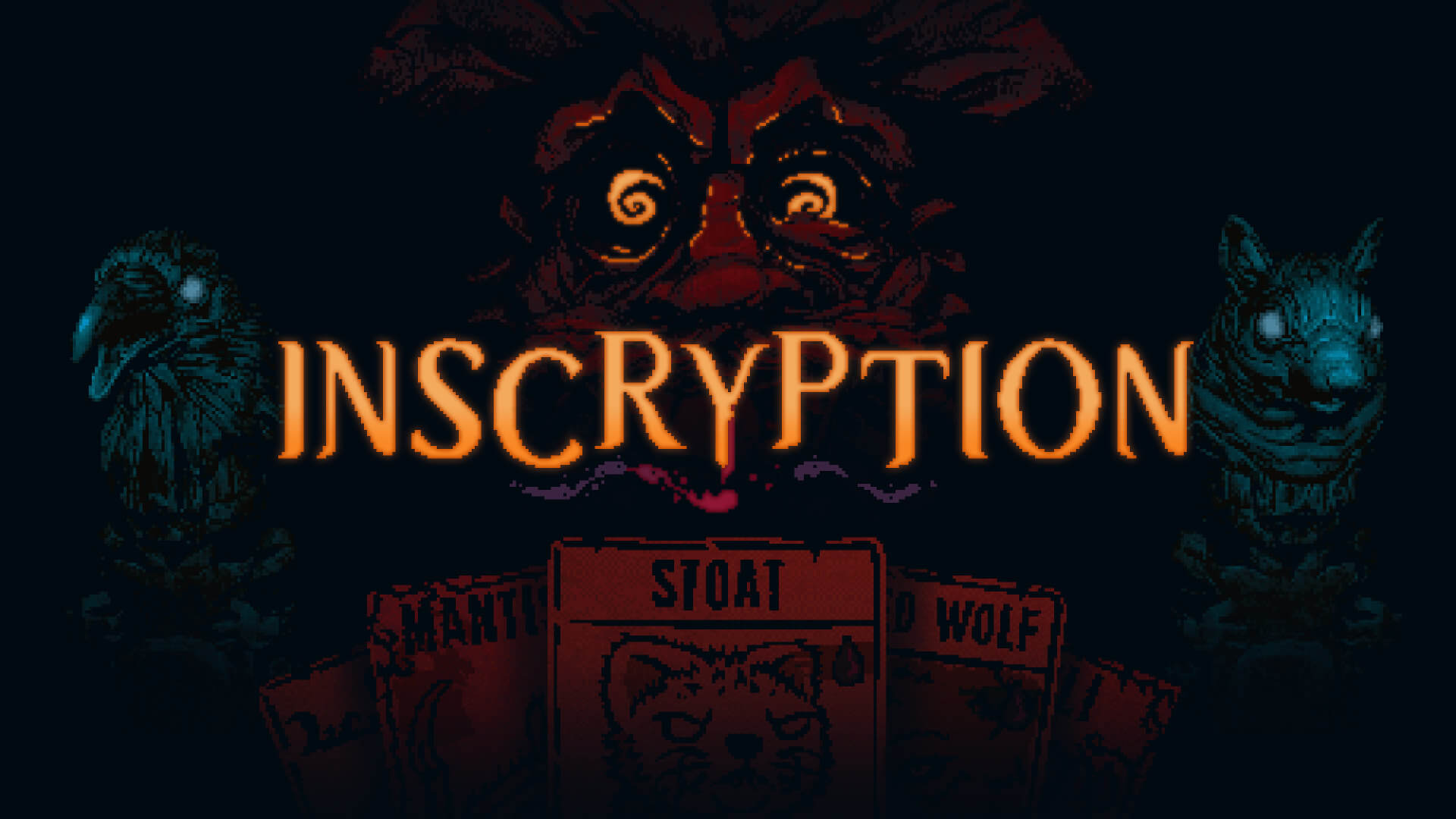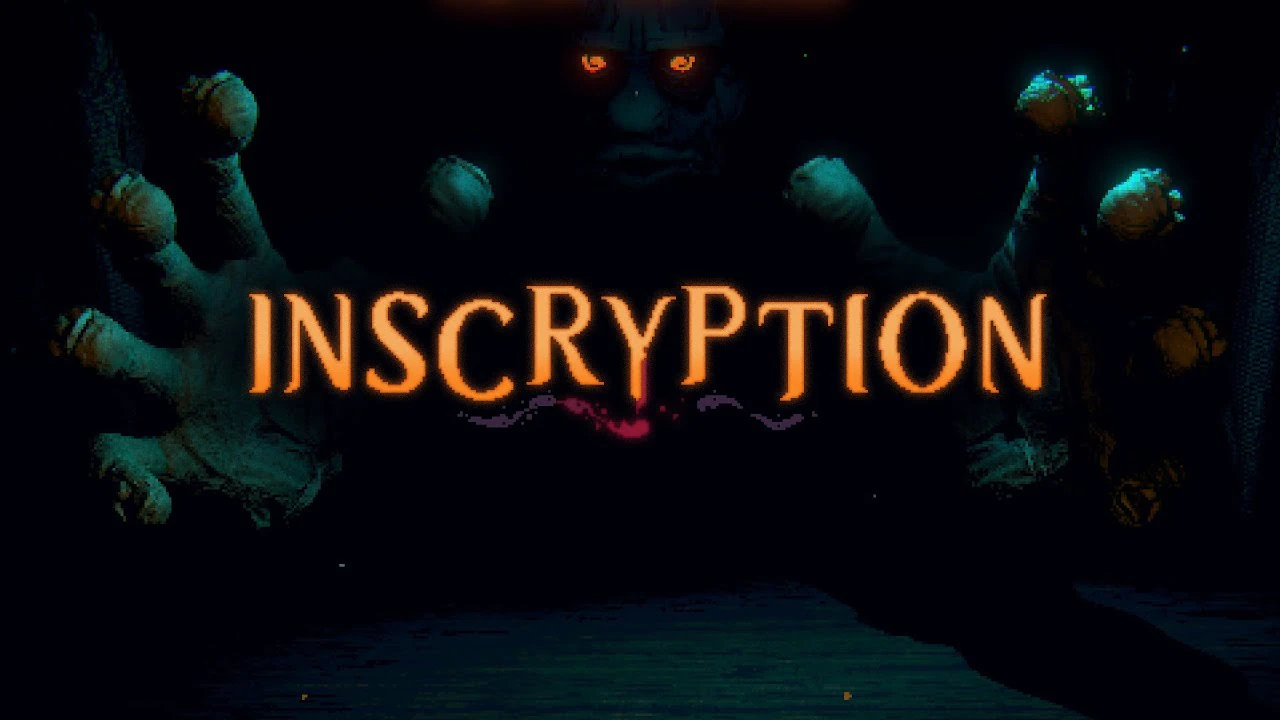
The Power of Cards In Horror
Last year’s Inscryption caught the attention of many gamers, and for good reason. Created by Daniel Mullins (responsible for other titles like Pony Island and The Hex), Inscryption makes for a bizarre, creepy, and captivating game – all which is presented through intriguing mechanics. Because while the mystery-laden narrative and horror vibes were some of the qualities that drew me to it, what really caught my attention was that of the card game mechanics.
Ever since playing Pokémon, Yu-Gi-Oh! and Magic the Gathering in my childhood, I’ve been hooked on trading/collectible card games. Now some folks may not associate cards with that of a video game; when we tend to think about cards, it might be their physicality, a form of play meant to be done with a person physically across from you. When I see a video game involving card-related mechanics, I wonder how exactly their form of play will translate into a digital space. In playing Inscryption and getting a feel for its card mechanics, I thought to myself – what can card games bring into horror experiences?
Similar to Inscryption, there are plenty of video games that have a horror appeal and use card game mechanics, such as Cards of the Dead, Vampire The Masquerade: The Game of Elders, and Ancient Terror: Lovecraftian Strategy Board RPG to name a few. But besides the horror flavor of these games, the mechanics and play of cards have the means to leverage suspense and tension, creating gameplay that amplifies horror vibes.

Much like any game, card games require strategy; unlike a lot of other games though, you have greater relative control when it comes to these types of games. That’s because of the customization that comes in deck building. Over the course of playing a game, players will eventually accumulate cards, switching out cards as needed to strengthen their deck for certain matchups. This brings a strong immersive element to any form of competitive card playing; when it comes to a “meta” – the collective understanding of what decks are performing the best in a competitive format – players build their decks to make sure they can handle those other top decks.
Deck customization is in some ways a survival tactic in a horror setting. For something like Inscryption, there is no meta, just that of the haunting character that challenges you. As you play the game against this being, you must learn what strategies and types of cards are going to be the best for you and build accordingly. In a game where the pacing is a tad faster like that of Cards of the Dead, how a deck is built will ultimately decide how one survives the onslaught of the living dead.
The heat of a match can work up both nerves and thrills, which is ideal for horror. To know that you are coming up against dangerous foes that you need to outthink, who you need to have a plan in place to defeat – and to some extent, must be flexible with that plan if things go awry – that is all part of a card game. When you add that of an unnerving or grim horror atmosphere/narrative to the mix, the formula all comes together for an edge of your seat like adrenaline. The gameplay all comes down to trying to think ahead of threats. This is even more the case when you consider the anxious element of luck in these games because even with the best intentions, there’s always the randomness of the draw.

You can have a line of play in mind or even several, but your plays ultimately come down to what you draw. Depending on the type of card game you’re playing, some players will opt to include cards in their deck that allow them to draw more cards – in case they find it difficult to get their strategies off the ground and running. Such an option may be available in competitive trading card games, but perhaps not in a video game, which is a great way to create a tense situation. Such a decision allows for a limitation that backs the player into a corner where they need to put a lot more consideration into their deck-building; if they know they are not going to have any sort of draw engine in their deck, then what are the right ratios they should run to see a specific card more frequently? How one chooses to build their deck will determine the likelihood of their win rate or survival. In a non-combative setting, the luck of the draw can also make for exhilarating branching narratives. In tabletop games like Arkham Horror, certain decks are used to provide twists to the narrative; you may have plans for one narrative path, but maybe thrown off depending on what cards you draw.
This luck of the draw leans into the great component of chance that is part of these games. Luck and chance are scary elements to any game because you can’t always count on everything working out. You can build a fully optimized deck with great pieces, but if you draw into a hand with few or none of those pieces, and no way to get to them – what do you do then? This is a fascinating aspect that can liven up horror games. Some of the best horror games keep players in the dark and at a distance in knowing all the possible threats abound – so what better way to keep players on edge than by providing an added layer of chance and luck to their strategies.

While card games have a great deal of intricate design to their play and deck building, so much of their strategy and overall suspenseful play leverage horror in ways we may not always consider. The anticipation of the draw, the assumptions that may cross our mind when it comes to our opponent’s strategies – these are the types of mental battles that take place among card games. They are thoughts and concerns that play further into narrative atmospheres of anxiety and tension, the looming fear of something horrible taking place if we are to be defeated.
While there have been several video games to implement intriguing card design into their play, I have not come across many titles that pull off a card game like Inscryption. To have a card game be so significant to the narrative – to allude to such eeriness and haunting possibilities – it all makes for a fascinating form of horror. Hopefully, this spawns even more works that take card games to the next digital level – one where it all comes down to the resources in our hand, and if we don’t draw the right card, all could be lost.
You can check out more horror game editorials on DreadXP.



